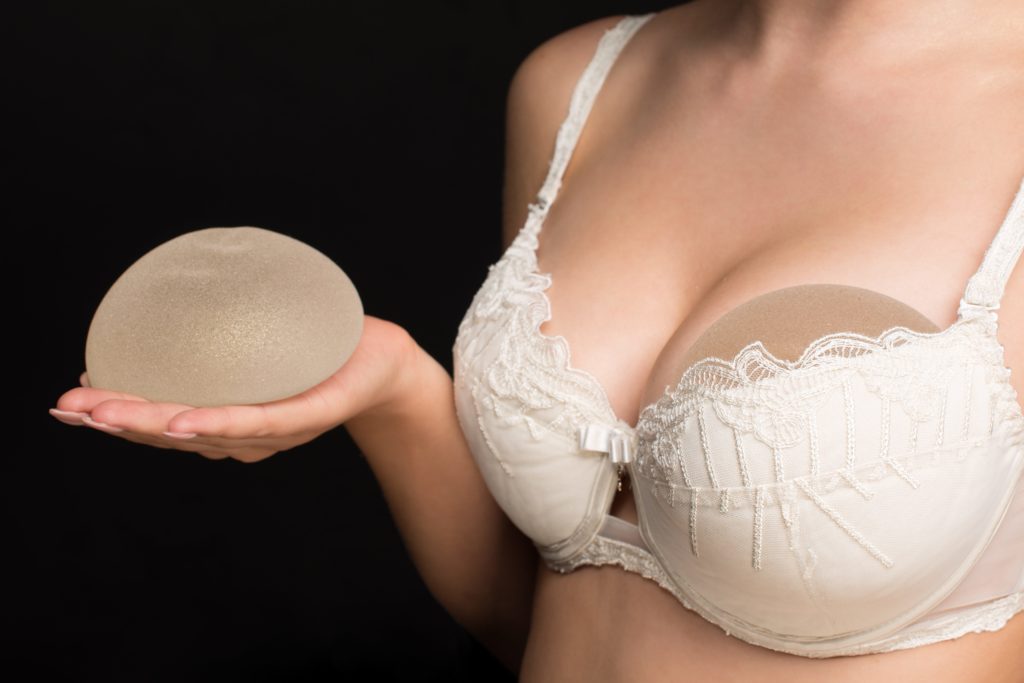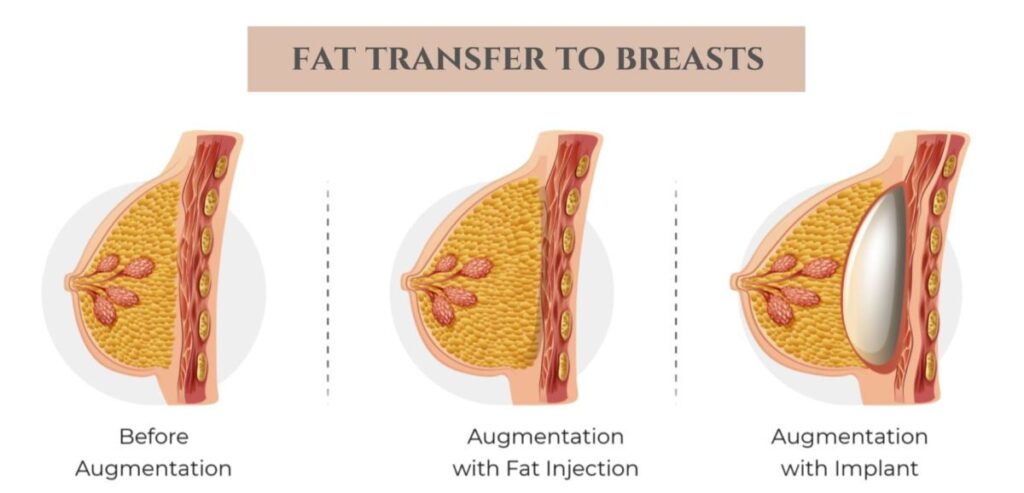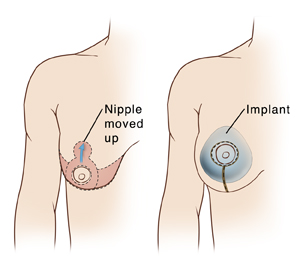Breast Augmetation
- Breast augmentation surgery is a popular cosmetic procedure that can enhance the size, shape, and overall appearance of a persons breasts. This procedure can be achieved through various techniques, including the use of
implants, fat grafting, and augmentation mastopexy. In this comprehensive guide, we will explore these three methods of breast augmentation, detailing
the procedures, benefits, recovery, and potential risks associated with each.
Breast Augmentation with Implants:
- Breast augmentation with implants involves the placement of silicone or saline
implants to increase breast size and improve shape. Its suitable for those
seeking a significant size increase or specific breast contouring.

Procedure:
- Patients consult with a board-certified plastic surgeon to discuss goals, implant type, size, and placement.
- General anesthesia is administered for patient comfort.
- Surgeons make incisions (often in the
breast crease, areola, or armpit) and insert the chosen implants behind the
breast tissue or beneath the chest muscle.
- Incisions are carefully closed, and dressings or surgical
tape are applied.
- Post-operative instructions are provided, including wearing a supportive surgical bra.
Benefits:
Implants offer a significant boost in breast size.
Patients can choose implant size and shape to
achieve their desired look.
Improved breast appearance often leads to
increased self-esteem.
Breast Augmentation with Fat Grafting (Lipofilling):
- This method involves harvesting fat from one part of the body via liposuction
and injecting it into the breasts for a natural and subtle enhancement.

Procedure:
Patients consult with a plastic surgeon to discuss their goals
and assess suitability for the procedure.
Excess fat is removed from donor areas (e.g., abdomen,
thighs) using liposuction.
The harvested fat is purified to remove impurities and
excess fluids.
Purified fat is strategically injected into the breasts for shape
and volume enhancement.
Patients wear compression garments and follow post-operative
instructions.
Benefits:
- Fat grafting provides a natural look and feel as it uses the patients own tissue.
- Liposuction contours donor areas while enhancing the
breasts.
- Liposuction incisions are small, resulting in minimal
scarring.
Augmentation Mastopexy (Breast Lift with Implants):
- Augmentation mastopexy combines breast augmentation with implants and a breast lift (mastopexy) to address sagging breasts while increasing size and fullness.

Procedure:
- Patients discuss goals, implant selection, and mastopexy techniques with a surgeon.
- General anesthesia ensures patient comfort.
- Implants are inserted, and excess breast
tissue is lifted and reshaped.
- Incisions are carefully closed and dressed.
- Patients follow post-operative instructions for healing and wear supportive bras.
Benefits:
Augmentation mastopexy lifts sagging breasts
while adding volume.
Addresses both sagging and size concerns.
Patients enjoy a youthful, uplifted appearance.
Potential Risks and Complications:
All three breast augmentation methods come with potential risks, including infection, bleeding, implant-related issues (for implant surgery), fat absorption (for fat grafting), and scarring. Patients should discuss these risks with their surgeon during the consultation.
Conclusion:
- Breast augmentation surgery offers individuals the opportunity to enhance their breast size, shape, and overall appearance according to their unique goals. Choosing an experienced and board-certified plastic surgeon is crucial to achieving the desired results safely. Patients should consult with their surgeon to determine the most suitable method for their goals and receive comprehensive information on the procedure, recovery, and potential risks.
